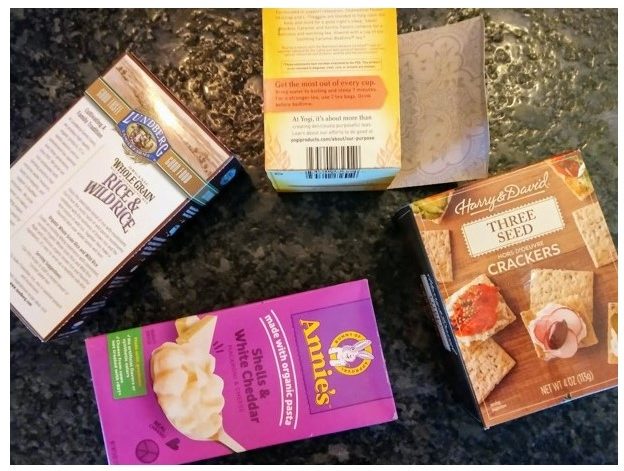As a parent, I sometimes had those days that stretched out in front of me like the Grand Canyon of hours, and I had no idea how I was going to fill all that time. The following project is one way to pass a rainy day and keep the whole family occupied for hours. It is a bit fiddly, however, and will require adult help and supervision. This craft is geared toward a child age 5 and up, but if you’re creative you can make a simpler version with a younger child.
Here are some of the supplies you will need:

- Small box (anything will do—macaroni and cheese, butter, or tea boxes are great options)
- Paper to cover the outside of the box (i.e. paper bags, printer paper, construction paper)
- Coffee filters
- Glue
- Scissors
- Pencil
- Ruler
- Small knife or box cutter
- Watercolors or food coloring
- Permanent marker (Sharpie)
- Thread
- Small stick, like craft sticks or chopsticks
Once I had all my supplies together, I took a minute to imagine what living under water would be like. I always associate an underwater world with being mostly blue, but maybe your child will think it should be more gray, or green. Once you’ve decided on that, get out your coffee filters and watercolors or food coloring and try to re-create those colors on the paper.
Because I wasn’t sure how much I would need, I painted two filters at a time. I also painted a separate set of coffee filters to create colorful sea creatures

While the coffee filters were drying, I got to work covering the outside of my box. Put your box on whatever paper you are using to cover it, and trace around each side of the box.

Cut all the pieces out, then glue them to the sides of your box.

You may have noticed that on one side of my box, I used black marker. It came out alright; so if you prefer, that’s another option for covering the outside of the box.
When my box was completely covered, I needed to decide which side the theater opening would be on. Once you’ve done that, take a pencil and straight edge or ruler and measure how big you want your opening to be.

Because I was using a tea box that had a flap that opened at the top, I was able to use scissors to cut out the theater opening. If that’s not an option, a sharp knife or box cutter will do the trick.

Next, I moved on to creating my water world. For my purposes, the blue coffee filter fit perfectly.

After I glued it in, I trimmed up the extra bits

After that, it was time to add some of the inhabitants of my underwater world. Since I had another set of colored coffee filters, I decided to just draw my creatures by hand and then cut them out.

I’ve also included a template of a variety of sea creatures you can print out and use as well.

I glued some of my creatures on the inside of the box. Using thread, I hung some so they looked like they were swimming.

Now that the “stage was set,” it was time to create some puppets. I kept it simple and drew stick figures.

I poked my stick through the side of the box and out the theater opening. Then I attached my puppet to the stick with transparent tape.

Make another puppet, and you and your child can each have a character to create your own little play!

There is no doubt that this project is more complicated than the ones I usually offer, but it does lend itself to lots of opportunities for creativity and further exploration. If you would like to take it a step further and discover more about oceans or other bodies of water, check out this list. In addition to the list provided, the Rogue Reads book, We Are Water Protectors by Carole Lindstrom, lends itself well to this project and will certainly inspire you and your child to take a thoughtful look at the earth’s most precious natural resource.
If creating a mini puppet theater also inspires you and your child to learn more about playwriting, the library has some great resources for that as well. Our database collection has articles and simple tips and tricks for creating plays and writing scripts with children. One site I discovered offered access to a lot different interesting subjects and topics. For playwriting specifically, just put that term in the search bar and you’ll have a whole list of different items to choose from.
